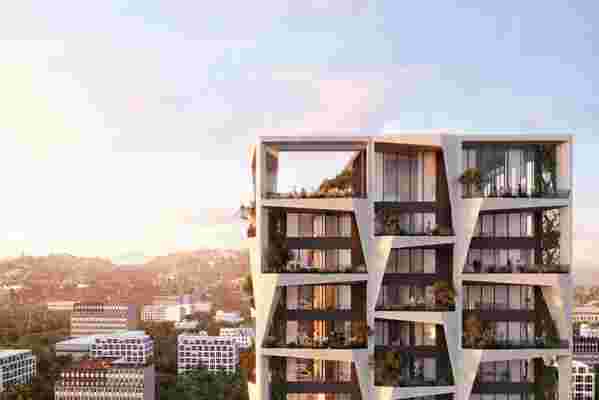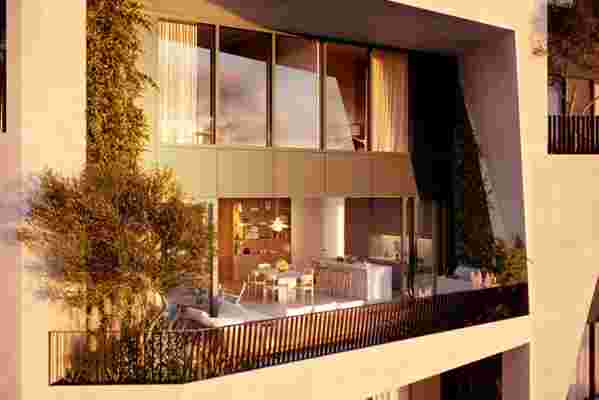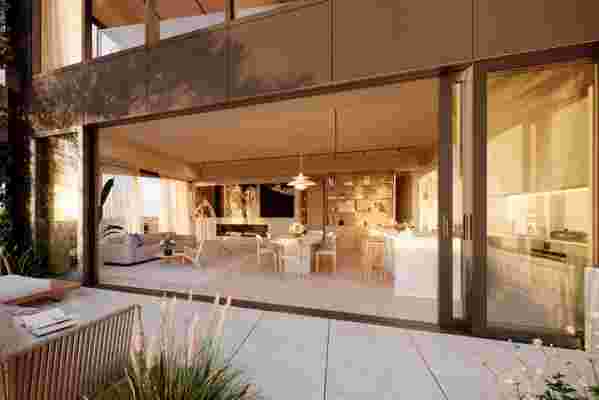Easily Ordering Your Own Bjarke Ingels–Designed Home Will Soon Be a Reality
When some of the brightest stars in their fields join forces to overhaul a long-outdated system, it’s going to make noise. Case in point: Roni Bahar, WeWork’s former director of development; Bjarke Ingels, principal at his namesake multidisciplinary design firm ; and Nick Chim, former head of Sidewalk’s Model Lab—experts in real estate, architecture, and tech, respectively—whose new start-up, Nabr , offers formerly unattainable sustainable luxury to the masses. And since raising a whopping $14 million in seed funding and an ambitious plan to deliver 100,000 stylish eco-conscious units globally, the trio has hit the ground running, to say the least. “We see ourselves as a development company that approaches real estate from a product standpoint,” Bahar notes. And that product is completely customizable from just about any angle.

A rendering shows the exterior of the building.
Last week, the tech-backed start-up officially launched with Nabr’s first apartment building, the BIG-Bjarke Ingels Group–codesigned 125-unit SoFA One —named for its prime spot in San Jose’s colorful arts district, South of First Area, and inspired by the 100-year-old lofts in New York City’s Tribeca and SoHo neighborhoods. “Lofts have structural flexibility, and our idea is to offer 21st-century lofts in a base building that has a lot of character. There’s a lot of soul to work with: material, texture, and warmth,” Ingels says. SoFA One won’t open its doors to residents until the summer of 2023, but the waitlist is very much up and running, giving potential residents a taste of the environmentally conscious style that comes with a Nabr-backed unit. One such guilt-free benefit is the abundance of View glass , which adapts its transparency to the weather.
And while Ingels designed this development and will design more as Nabr swiftly sweeps across the world in the coming years, the start-up is bringing on a roster of visionary talent, including self-taught Barcelona-based Katty Schiebeck . She will be infusing Nabr-approved developments with her signature Scandinavian minimalism–meets–contemporary Spanish look, which she has described as simultaneously welcoming and austere. Schiebeck says, “During our creative process for Nabr, we were able to choose no more than four materials to reduce our impact.”

Each home will have the option of an outdoor patio.
Schiebeck says, “For quite some time, we have been studying different paths towards sustainability. It has become a crucial pillar that defines our vision, design, and material selection.” Nabr provides themes by bringing in interior designers of various styles—with a few sustainability-minded constraints, of course. Ingels explains, “This transition into the green housing market will happen eventually, and there’s almost no inventory at the moment. If we’re in the business of being able to provide good quality buildings that will be valuable in just a few years, we’re setting our consumers up for success.”
One thing Nabr wants to get straight, though, is that it neither owns real estate nor operates its own factories; it sells high-design, low-impact homes directly to consumers on Nabr’s platform. The highly convenient direct-to-consumer model aside, Nabr is one of few real estate–focused companies that have adapted to the fact that we live in the Digital Age: Nabr has masterfully digitized both the design process and the sometimes painfully stressful communication with supply chains, which massively lessen the burden on those who just want to sign the deed and be done with it.

To better Nabr’s zero-carbon pledge, each home will place an emphasis on indoor-outdoor living.
“Somehow, in the time I’ve been involved in architecture, no one has succeeded in applying the power of productization to residential real estate,” Ingels explains. “The things we make many of—iPhones, for example—become better and better and cheaper and cheaper because we remain faithful to specific typology.” And that’s what Nabr is keen on doing: continually applying innovation to an already revolutionary product that, down the line, will become even better.